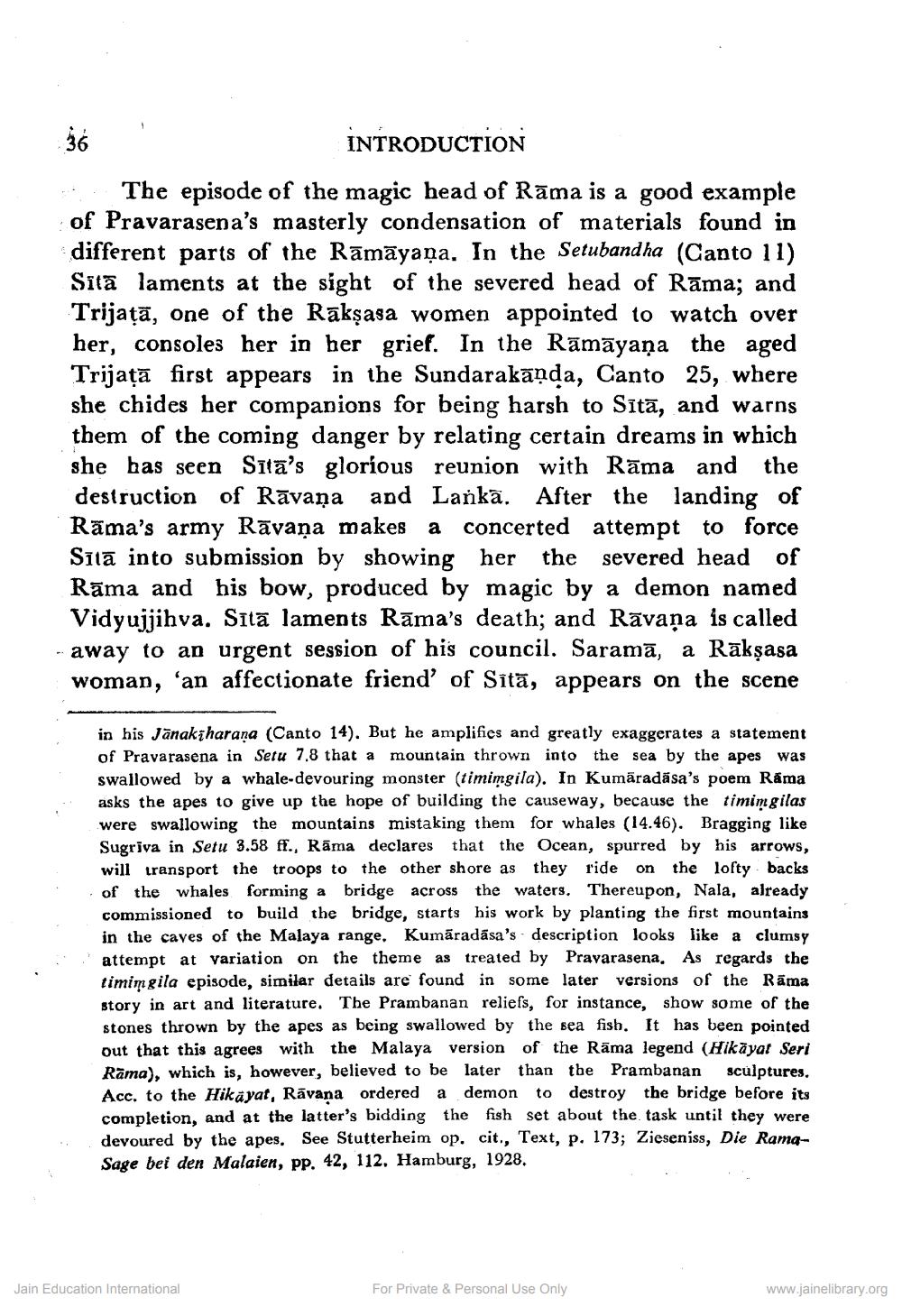________________
36
:
INTRODUCTION The episode of the magic head of Rāma is a good example of Pravarasena's masterly condensation of materials found in different parts of the Rāmāyaṇa. In the Setubandha (Canto 11) Sita laments at the sight of the severed head of Rāma; and Trijatā, one of the Rakşasa women appointed to watch over her, consoles her in her grief. In the Rāmāyana the aged Trijatā first appears in the Sundarakānda, Canto 25, where she chides her companions for being harsh to Sītā, and warns them of the coming danger by relating certain dreams in which she has seen Sita's glorious reunion with Rāma and the destruction of Rāvana and Lańkā. After the landing of Rāma's army Rāvaņa makes a concerted attempt to force Sītā into submission by showing her the severed head of Rāma and his bow, produced by magic by a demon named
Vidyujjihva. Sīlā laments Rāma's death; and Rāvana is called -away to an urgent session of his council. Saramā, a Rākşasa woman, 'an affectionate friend' of Sītā, appears on the scene
in his Janakīharana (Canto 14). But he amplifies and greatly exaggerates a statement of Pravarasena in Setu 7.8 that a mountain thrown into the sea by the apes was swallowed by a whale-devouring monster (timimgila). In Kumāradāsa's poem Rama asks the apes to give up the hope of building the causeway, because the timimgilas were swallowing the mountains mistaking them for whales (14.46). Bragging like Sugrīva in Setu 3.58 ff., Rāma declares that the Ocean, spurred by his arrows, will transport the troops to the other shore as they ride on the lofty backs of the whales forming a bridge across the waters. Thereupon, Nala, already commissioned to build the bridge, starts his work by planting the first mountains in the caves of the Malaya range. Kumāradāsa's description looks like a clumsy attempt at variation on the theme as treated by Pravarasena. As regards the timimgila episode, similar details are found in some later versions of the Rāma story in art and literature. The Prambanan reliefs, for instance, show some of the stones thrown by the apes as being swallowed by the sea fish. It has been pointed out that this agrees with the Malaya version of the Rāma legend (Hikāyat Seri Rāma), which is, however, believed to be later than the Prambanan sculptures, Acc. to the Hikayat, Rāvana ordered a demon to destroy the bridge before its completion, and at the latter's bidding the fish set about the task until they were devoured by the apes. See Stutterheim op. cit., Text, p. 173; Zieseniss, Die RamaSage bei den Malaien, pp. 42, 112, Hamburg, 1928.
Jain Education International
For Private & Personal Use Only
www.jainelibrary.org




